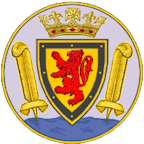History 1900 to 1925
At the beginning of the 20th century there were 3,357 people living in Saltash, more than double the 1851 population of 1,621. New terraces and villas had been built along existing roads, and many new residential streets had been created, mostly with terraced housing, to accommodate this increase. The tightly packed streets of 16th century houses which curved along the contours of the hill behind the town quay continued to house most of the industrial workers, ferrymen, and fisherfolk, but further housing in the form of a long row of cottages, Brunel Terrace, had been built behind Sand Quay. The waterside community even had its own mission church, built strategically between two of the three public houses on Tamar Street.
In 1903 the impressive Wearde House, built around 1740, caught fire. Sailors from HMS Defiance (the Royal Navy's torpedo school, anchored off Wearde Quay) formed a bucket chain carrying water from the river to quench the flames, thus saving part of the house which can still be seen next to the community school.
By 1904 the railway was firmly established as the major transportation link in Saltash. There was a regular train service for Saltash commuters who worked in Plymouth and Devonport, and Saltash became the busiest station in Cornwall. The traffic to and from HMS Defiance alone was so considerable that the Great Western Railway opened Defiance Halt, above Wearde Quay, in 1905. To cope with the increased loads, the railway was re-routed to pass north of Wivelscome Lake, and the timber viaducts at Coombe and Forder were rebuilt in stone.
At the Saltash waterside there were now three wharves (New Wharf, Commercial Wharf and Ashtor Wharf) and a pontoon. Industry, however, was in decline – the ferry had lost much of its trade to the railway, the limekilns were demolished, and the boat yard, the foundry, and the quarry were all closed.
In contrast, a new quarry at Burraton Coombe was growing rapidly. By 1906 Tor Quarries had built a crushing plant and a narrow gauge tramway linking the quarry to the plant. The crushed stone, for road building and hardcore, was not only used locally but also shipped from Forder to places as far away as Holland. Exports, in fact, did so well that another tramway, from the crusher to Forder Quay, was built a decade or so later.
Now that the Saltash waterside was no longer teeming with industry, its picturesque qualities came to the fore, and its popularity as a destination for day-trippers continued and even increased. Accordingly, in 1906 the Rustic Tea Gardens were built on the site of the old quarry near Sand Quay, and an area for bathing was established to the north of New Wharf.
The First World War left its mark on Saltash. On the 6th of August 1914 Walter Edgcumbe and William Knight of Saltash lost their lives aboard HMS Amphion, the first ship of the Royal Navy to be sunk in WWI. During the war there was an Army Training Camp at Wearde, and this was converted in 1918 to the Queen Alexandra's Convalescent Centre, caring for battle casualties. There is no record of how many WWI Saltash servicemen were injured and survived, but almost a hundred lost their lives – we will remember them.
After WWI the town continued to grow and to gain amenities. In 1919 the Working Men’s Club was opened. In 1921 the Sisters of the Good Shepherd settled in Saltash and founded St Ann's Convent on New Road. In 1924 the old brewery in Elwell Road was replaced by an electricity generator, the Imperial Picture House opened on Culver Road, a new recreation ground was laid out at Longstone, and Saltash's first public housing estate was built at Salt Mill to the north of Westbourne Terrace.
Although the Church of St Nicholas and St Faith had become a parish church in 1881, the building had remained the property of the Corporation. This most unusual situation was corrected in 1923, when the Corporation conveyed the site and fabric of the church to the Church Authorities on the understanding that the mayor could have the church bells rung upon request and that the front pew be reserved for the mayor's use when needed. These conditions remain in force to this day.
page updated 2025-03-21
